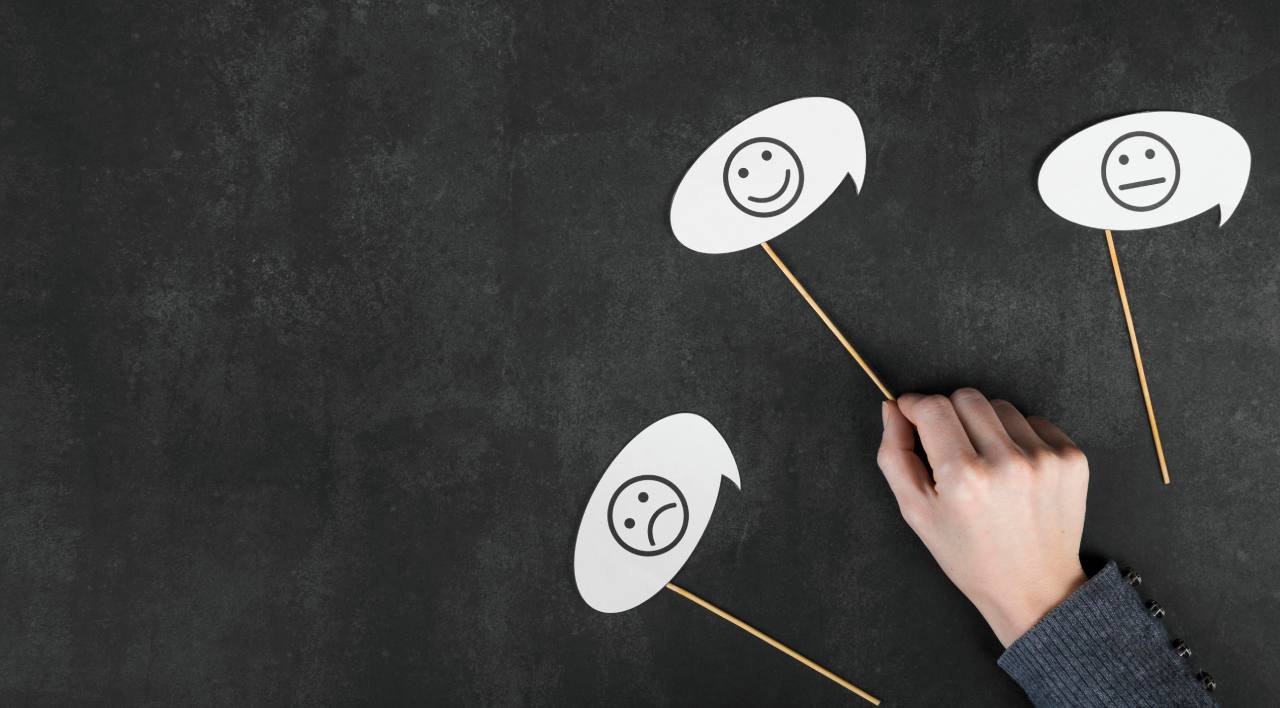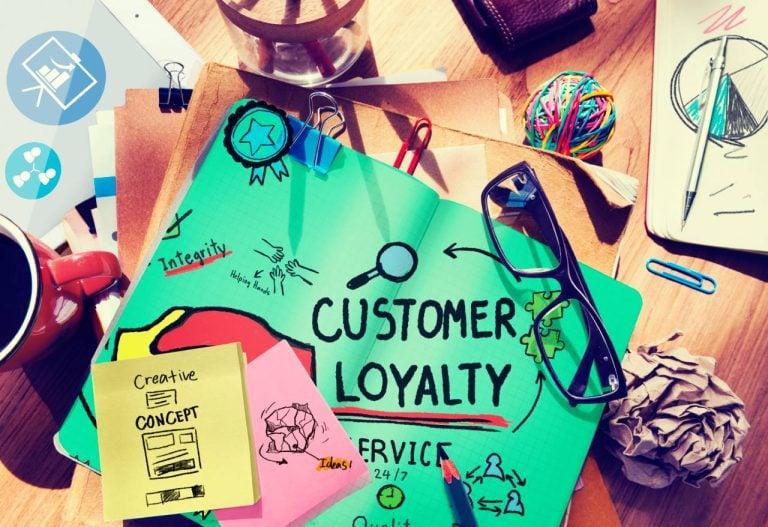Imagine a world where every interaction with a company leaves you feeling not just satisfied but genuinely valued and understood. That’s the power of strategic, measurable customer service goals—turning everyday transactions into memorable experiences.
In the ever-evolving landscape of customer expectations, setting clear, impactful goals isn’t just a necessity; it’s an art form that can transform businesses and foster lasting customer relationships.
From the perspective of business owners and service managers, understanding how to set these strategic goals begins with recognizing their undeniable importance.
By adopting frameworks like SMART—specific, measurable, achievable, relevant, and time-bound—companies can ensure their customer service strategies are not only aligned with their broader objectives but also finely tuned to meet and exceed customer demands.
This approach empowers businesses to break down their aspirations into actionable steps, covering everything from operational efficiency to customer satisfaction and training.
This article delves into the essential elements required to establish effective customer service goals. We’ll explore diverse types of goals, the significance of KPIs, and the indispensable tools such as customer service software and automation.
Together, we’ll unravel the secrets of maintaining communication across teams, tracking progress meticulously, and continuously enhancing customer satisfaction to leave a positive organizational impact.
Let’s embark on this journey to revolutionize your customer service approach, crafting a business environment where excellence becomes the everyday standard.
Table of Contents
Understanding the Importance of Customer Service Goals
Setting customer service goals is pivotal in aligning your customer support teams with overall business objectives. These goals not only motivate customer service agents but also underscore their crucial role in the organization’s success.
By utilizing metrics such as Customer Satisfaction Score (CSAT) and Net Promoter Score (NPS), businesses can effectively track their progress towards achieving specific, measurable customer service objectives.
Consider setting ambitious yet realistic goals. Overly unrealistic targets can demotivate your team and hinder achievement. To stay competitive, regularly review and adjust your goals to align with evolving customer expectations and priorities. This adaptability ensures ongoing improvement in customer interactions and satisfaction levels.
Here’s how to set effective customer service goals:
- Align Goals with Business Objectives: Ensure customer service targets complement broader company goals.
- Use SMART Goals: Make sure they are Specific, Measurable, Achievable, Relevant, and Time-bound.
- Leverage Customer Feedback: Use surveys to capture customer expectations and track satisfaction.
- Celebrate Achievements: Recognizing accomplishments boosts morale and fosters a culture of excellence.
By focusing on customer service goals, you contribute to creating memorable customer experiences, fostering loyalty, and enhancing retention rates.
Adopting the SMART Framework
In the fast-paced world of business, especially in customer service, setting goals is crucial for success. The SMART framework serves as a compass, guiding customer service teams toward goals that are Specific, Measurable, Achievable, Relevant, and Time-bound.
This framework ensures clarity, consistency, and motivation, aligning individual and departmental objectives with business-wide ambitions. Embracing SMART goals in customer service can translate into improved customer satisfaction, augmented retention rates, and bolstered customer loyalty.
Regularly reviewing these goals is essential, allowing for adjustments based on customer feedback and shifting business priorities.
By fostering an environment focused on achieving and reviewing clear targets, businesses can inspire their customer service agents, leading to a cohesive team effort aimed at elevating overall customer experience and satisfaction.
Specific Goals
Specificity in customer service goals is the blueprint for success. It lays the foundation by providing clear, concise, and focused objectives for the entire team.
When goals are specific, such as aiming to reduce customer complaints by 50% within three months, they cast a clear vision that everyone can work towards. Detailing the methods to achieve these goals, like enhancing a particular customer service channel, adds layers of clarity.
Specific goals help articulate precise improvements, making it easier to assess the impact of implemented strategies. For instance, setting a clear target for live chat response time ensures focused efforts on refining processes to meet customer expectations effectively.
By specifying tangible outcomes, the effectiveness of customer service strategies can be easily determined and refined as needed.
Measurable Goals
Measurable goals are the yardstick by which progress is gauged, spotlighting areas ripe for enhancement. These goals establish clear objectives, such as increasing customer satisfaction scores by a particular percentage over a set timeline.
By providing clarity and focus, measurable goals help customer service teams track improvement in response times and resolution rates. This accountability empowers teams by setting unambiguous performance expectations, like resolving a significant percentage of complaints within a day.
Utilizing well-defined, quantifiable metrics, such as Customer Satisfaction Scores or Churn Rates, measurable goals ensure progress is trackable and transparent. While setting these goals, it’s crucial to strike a balance between realism and ambition, motivating teams while guarding against the fallout of unattainable targets.
Achievable Goals
Crafting achievable goals is about finding the sweet spot between ambition and realism, ensuring that targets motivate rather than discourage.
To set such goals, it’s crucial to assess current resources and capabilities against desired objectives. If a company boasts a well-trained team and a straightforward product offering, aiming for goals like “80% of customers receiving a response within 60 seconds” becomes feasible.
It’s vital to ensure that goals align with existing skills and tools, laying the groundwork for success. By balancing ambition with practicality, customer service teams can tackle objectives confidently, drawing on experience and resources for successful outcomes.
Thus, achievable goals set realistic expectations that empower teams while maintaining morale.
Relevant Goals
Relevant goals underpin a coherent customer service strategy, ensuring alignment with the company’s overarching mission. By tailoring objectives to mirror broader business aims—such as growing the user base or enhancing retention—teams remain focused on delivering meaningful customer outcomes.
Setting relevant goals requires a deep understanding of customer needs, which can be achieved through actively soliciting and acting on customer feedback. Goals that hone in on business priorities like fast, friendly support directly contribute to an improved customer experience.
Regular reviews and adjustments based on business shifts and feedback reinforce goal relevance, ensuring that every objective is a stepping stone toward sustained growth and fulfillment of customer promises.
Time-bound Goals
Time-bound goals bring a sense of urgency to customer service endeavors, driving teams toward prompt achievement of objectives. By providing specific deadlines, these goals inspire focused action within a defined timeframe, preventing tasks from stalling or being deprioritized.
This temporal structure enhances accountability, with progress tracked against fixed timeframes. When a goal has a time-bound endpoint, such as responding to 80% of customers within a specific timeframe by a particular date, it encourages timely improvements and sustained attention to customer needs.
Clearly communicated deadlines are crucial, ensuring the entire team collaborates effectively under shared timelines, ultimately honing the efficiency and impact of service delivery.
Types of Customer Service Goals
Setting effective customer service goals is a vital step towards enhancing the quality of interactions with customers and fostering a loyal customer base. These goals fall into two primary categories: strategic and tactical.
Strategic goals are long-term and are intricately aligned with the company’s mission, focusing on assessing competition, industry trends, and growth trajectories. On the other hand, tactical goals are more immediate and operational, aimed at day-to-day improvements in service delivery.
Applying the SMART framework—Specific, Measurable, Achievable, Relevant, and Time-bound—is essential in ensuring these goals are effective.
By utilizing metrics such as Customer Satisfaction Score (CSAT), Net Promoter Score (NPS), and Customer Churn Rate, organizations can quantify their progress and align their customer service teams with the overall business objectives.
These well-defined goals play a critical role in improving customer interactions, driving satisfaction, and ultimately enhancing customer loyalty.
Operational Goals
Operational goals in customer service are designed to streamline processes, reduce costs, and optimize resource utilization. These goals form the backbone of any efficient service framework by ensuring that operations remain both effective and sustainable.
An important aspect of operational goal setting is to strategically balance service quality and cost-efficiency. Utilizing automation tools and AI for handling basic inquiries not only reduces operational costs but also allows customer service agents to focus on more complex issues, enhancing overall service quality.
It’s about creating synergy between various teams to align with broader business objectives. This alignment ensures that while the customer service team works efficiently, they also contribute to the company’s profitability by maintaining measurable operational standards.
Through these goals, businesses can better manage their resources while ensuring that customers receive the high-quality service they deserve.
Customer Satisfaction Goals
Enhancing customer satisfaction is at the heart of any customer service-focused organization. Setting customer satisfaction goals involves creating targets that improve customers’ perceptions of their service experience.
These goals should be intricately tied to metrics like Customer Satisfaction Score (CSAT) and Net Promoter Score (NPS). By making these goals specific, measurable, and time-bound, companies ensure their customer service strategies remain effective and relevant to customer expectations.
Aligning these goals with broader company missions helps motivate entire teams, ensuring cohesive efforts towards enhancing service consistency. The actionable insights drawn from customer feedback, surveys, and measurable indicators like CSAT guide improvements in customer experience.
Such goals not only foster a positive customer experience but also build long-term customer loyalty, leading to satisfied and happy customers who keep returning.
Training and Development Goals
Developing a skilled customer service team is essential for maintaining high standards of service. Training and development goals focus on equipping customer service agents with the knowledge and skills needed to effectively address a wide range of customer issues.
A comprehensive training program should include product knowledge and advanced troubleshooting techniques. Regular workshops and simulations are key for keeping skills sharp, particularly for less common scenarios.
By investing in training programs that emphasize active listening and empathy, teams can better respond to customer interactions, leading to improved customer happiness.
Such goals also foster continuous learning and improvement, crucial for reducing average handle time and enhancing the quality of service provided. Ultimately, a well-trained customer support team translates into better customer satisfaction scores and lower escalation rates.
Financial Goals
Balancing excellent customer service with financial viability is a critical aspect of setting financial goals in customer service. These goals must be aimed at optimizing cost efficiency without sacrificing service quality.
Strategies might include the use of AI chatbots to handle up to 30% of basic inquiries, thereby freeing up human resources for more complex tasks and potentially reducing the average cost per contact by 8%. Renegotiating contracts for outsourcing can also contribute, with goals such as a 20% reduction in per-ticket cost.
Measurable financial objectives ensure the business manages costs effectively, while still providing a delightful and positive customer experience. By focusing on these financial goals, customer service teams are able to contribute to the company’s profit margins while reinforcing the value of stellar service for every customer interaction.
Identifying Key Performance Indicators (KPIs)
In the dynamic world of customer service, identifying Key Performance Indicators (KPIs) is crucial for optimizing the performance of customer support teams. These metrics provide a roadmap to enhance agent productivity and gain deeper insights into customer interactions.
KPIs are instrumental in evaluating the effectiveness of customer experience strategies and serve as a compass for strategic improvements.
Regular monitoring of relevant KPIs ensures that your customer service team stays on course with its objectives. By tracking these indicators, businesses can fine-tune operations, swiftly address areas of concern, and drive towards excellence in customer service.
Here are some essential KPIs for customer service teams:
- Customer Satisfaction Score (CSAT): Reflects the happiness of your customers, indicating the team’s performance.
- Response Time: Measures how quickly agents address customer queries, impacting customer expectations and satisfaction.
- Customer Retention Rate: Tracks the ability to keep customers returning, highlighting customer loyalty.
- First Response Time (FRT): Evaluates the speed of initial interaction, crucial for a positive customer experience.
Harness these KPIs to propel your team toward achieving measurable customer service goals, and ultimately, to craft a business renowned for excellent customer service.
Setting Clear Benchmarks
Setting clear benchmarks for customer service is imperative for achieving the dazzling success every business dreams of. Imagine defining what ultimate triumph looks like—a tapestry woven with primary and stretch goals.
These benchmarks provide a structured path, turning aspirations like increasing customer satisfaction scores by a set percentage over a specific period into tangible targets.
Such clarity differentiates between major and minor achievements, allowing us to applaud our milestones and align them with broader company goals.
This not only showcases various levels of success but also instills focus and determination in the entire team.
Realistic benchmarks prevent overextension, minimizing stress and building trust for future endeavors. By defining these targets, your customer service team can tackle specific, measurable goals and dramatically enhance overall performance.
Here’s a straightforward approach:
| Step | Description |
|---|---|
| Define | Decide on what success in customer service looks like. |
| Measure | Set clear, measurable customer service goals. |
| Achieve | Ensure goals are realistic and achievable. |
| Improve | Use benchmarks to enhance performance and retention. |
Embrace the power of structured benchmarks and watch your team soar to new heights of excellence!
Utilizing Customer Service Software
In today’s fast-paced business world, utilizing customer service software is no longer optional—it’s essential! With platforms like Customerly, companies can efficiently track vital KPIs to organize and boost customer service operations.
Automating these processes reduces manual efforts, streamlining workflows for enhanced customer satisfaction.
As businesses expand, managing and tracking customer service goals becomes increasingly complex. This is where software solutions shine, ensuring efficiency and precision.
These tools provide invaluable insights and resources, enabling customer service teams to set and track their targets effectively. By doing so, team productivity skyrockets, leading to satisfied and loyal customers.
Omnichannel customer service software is another game-changer. It integrates multiple communication channels, delivering a consistent and smooth experience for customers across different platforms.
Whether it’s through email, chat, or social media, your customer service team can provide top-tier support seamlessly.
Here’s a quick look at the benefits of customer service software:
- Enhanced Efficiency: Reduced manual efforts, streamlined workflows.
- Valuable Insights: Data-driven tools for setting and tracking goals.
- Omnichannel Integration: Consistent customer experience across platforms.
Investing in customer service software is investing in customer happiness and loyalty. Remember, happy customers are loyal customers!
Leveraging Automation in Customer Service
In the vibrant world of customer service, automation emerges as a revolutionary force that transforms mundane tasks into seamless processes.
By streamlining daily interactions through AI chatbots and other innovative tools, businesses can significantly reduce response times and enhance customer experience without the need to expand the support team.
Benefits of Automation in Customer Service:
- Reduced Response Time: Deploying AI chatbots ensures that queries are addressed promptly, elevating customer satisfaction scores.
- Cost Efficiency: Automation slashes operational costs by minimizing the need for additional customer service agents, allowing businesses to allocate resources strategically.
- Predictive Insights: With automation, service departments can effectively forecast workloads and anticipate customer issues, enabling a proactive approach.
- Data Streamlining: Automating data entry cuts down manual work, leading to a more efficient and focused customer service team.
Here’s a quick snapshot of the impact:
| Key Area | Impact |
|---|---|
| Response Time | Reduced by up to 70% |
| Operational Costs | Decreased by up to 30% |
| Forecasting Accuracy | Improved predictive modeling |
By embedding automation into customer service strategies, businesses not only enhance their service but also foster a culture of innovation and excellence, driving towards satisfied and loyal customers.
Communication and Alignment Across Teams
In the dynamic world of customer service, aligning your goals with broader company objectives is not just beneficial—it’s essential. This integration ensures that every customer service agent is motivated and accountable, contributing to the collective vision.
Setting clear, measurable customer service goals enables teams to work collaboratively towards shared business objectives, such as enhancing customer satisfaction scores.
Key Strategies for Communication and Alignment:
- Regular Assessment: Review and adjust customer service goals monthly, quarterly, and annually to keep pace with organizational priorities.
- Cross-Team Coordination: Collaborate with marketing and business teams to ensure your customer service goals are in sync with larger objectives, thereby improving measurability and success rates.
- Understanding Challenges: Recognize the hurdles faced by your customer service team. This understanding is vital for setting realistic and achievable goals.
By fostering a culture of open communication and alignment, you not only achieve excellent customer service but also propel satisfying and positive customer experiences that contribute to long-term customer loyalty.
A synchronized approach leads to happy customers and propels the entire team towards business success.
Tracking Progress and Making Adjustments
In the dynamic world of customer service, regular monitoring of key performance indicators (KPIs) is vital for tracking progress toward objectives.
These KPIs act as the compass guiding your customer service team toward achieving their targets for customer satisfaction, response time, and customer retention rates.
If progress towards goals is found lacking, don’t hesitate to recalibrate your action plan. This might involve hiring additional customer service agents or investing in advanced systems like Customerly.
Both strategies can address areas needing improvement, ensuring satisfied customers and higher customer retention rates.
To maintain accountability, establish specific roles and deadlines. This structure ensures that tasks are completed within set timeframes, fostering a positive customer experience and nurturing loyal customers. Regularly reviewing goals is equally crucial.
This practice guarantees that your objectives continue to be relevant and achievable amid evolving business and market conditions.
In summary, achieving excellent customer support requires constant evaluation and adaptation. By staying committed to tracking and adjusting efforts, your entire team can consistently create happy customers and bolster customer loyalty.
Enhancing Customer Satisfaction
Enhancing customer satisfaction is not just a goal but a fervent pursuit that propels businesses toward unrivaled success.
By establishing specific, measurable goals—such as reducing customer complaints by 50% within a predetermined timeframe—companies can dramatically elevate their customer satisfaction.
Automation in customer service processes is a game-changer, slashing response times and ensuring that customers receive quicker, more efficient support.
Metrics like the Customer Satisfaction Score (CSAT) are invaluable tools, enabling businesses to quantify and track their progress meticulously.
Investing in the training of customer service agents is essential. A well-trained team versed in company guidelines enhances the quality of interactions, leading to happy customers and higher loyalty.
Additionally, crafting clear, measurable customer service goals provides the clarity and focus needed to boost customer satisfaction rates.
To set your enterprise on the path to customer satisfaction, consider these essential elements:
- Implement automation for faster response times
- Train customer service teams thoroughly
- Utilize metrics like CSAT to track improvements
- Set SMART goals to reduce complaints
Empower your entire team with these strategies to foster customer happiness and loyalty!
Measuring Organizational Impact
In the dynamic world of customer service, measuring organizational impact through customer interactions is crucial for driving success.
Establishing measurable goals allows businesses to directly link customer service performance to larger metrics like customer retention rates and lifetime value.
This alignment ensures every customer service agent is laser-focused on achieving business goals, fostering a culture of excellent customer service.
One effective way to achieve this is by adopting the triple metric model. This model aligns customer service objectives with top-level company goals, ensuring that each department contributes meaningfully.
Key customer service KPIs, such as Net Promoter Score (NPS) and Customer Satisfaction (CSAT) scores, are instrumental in capturing valuable customer feedback, enabling businesses to quantify and enhance customer satisfaction.
Table: Key Performance Indicators
| KPI | Purpose |
|---|---|
| Net Promoter Score (NPS) | Measures customer loyalty and satisfaction |
| Customer Satisfaction | Gauges overall customer happiness |
Lists of SMART, achievable goals further steer the entire team in the right direction, harmonizing efforts towards a positive customer experience. Ultimately, these strategic goals ensure the delivery of happy, loyal customers and optimized organizational performance.
Let your customer support teams shine by setting targets that drive both satisfaction and measurable business impact.





